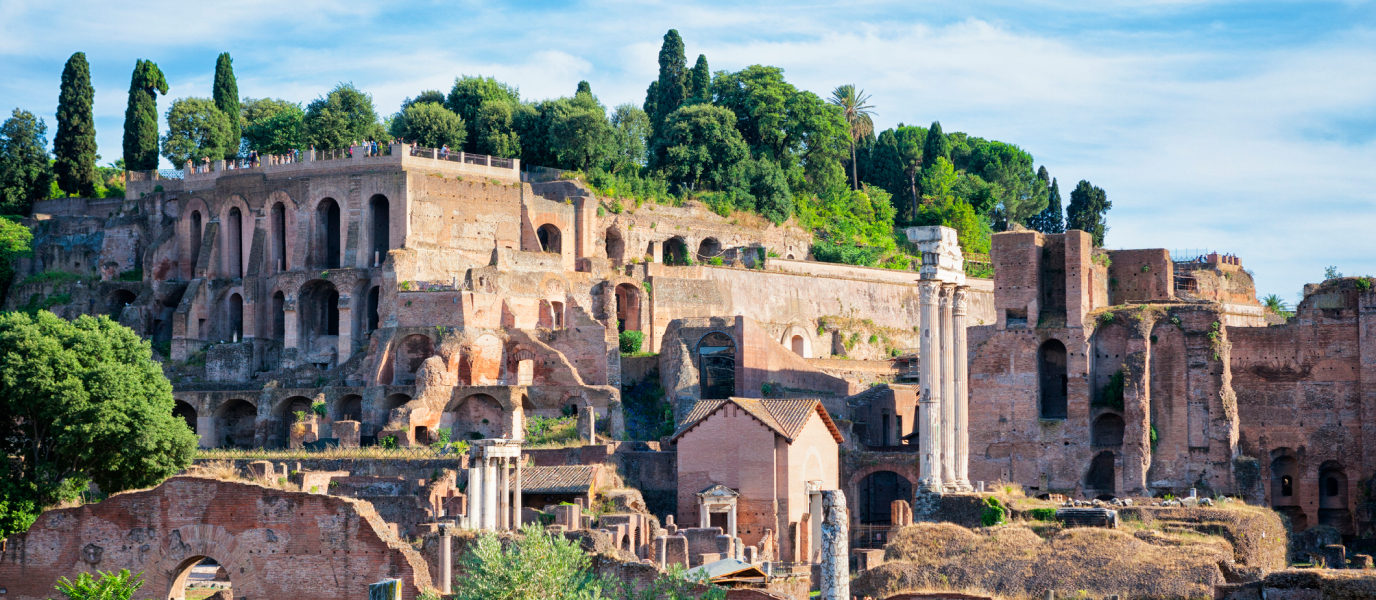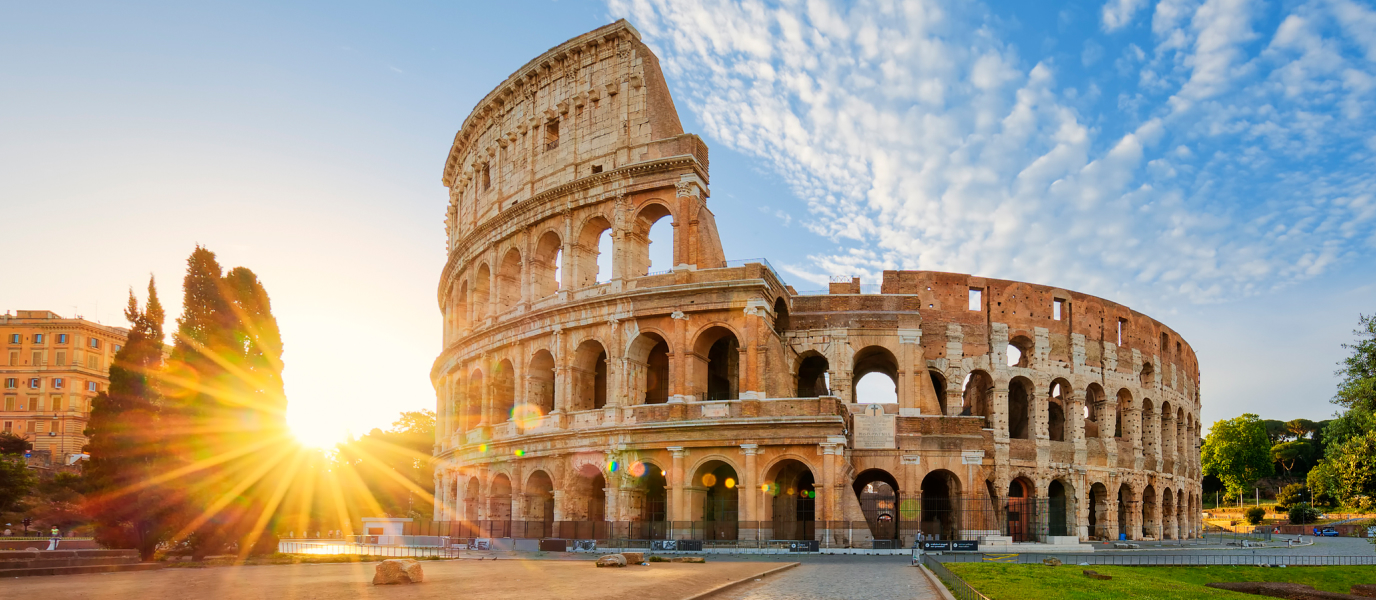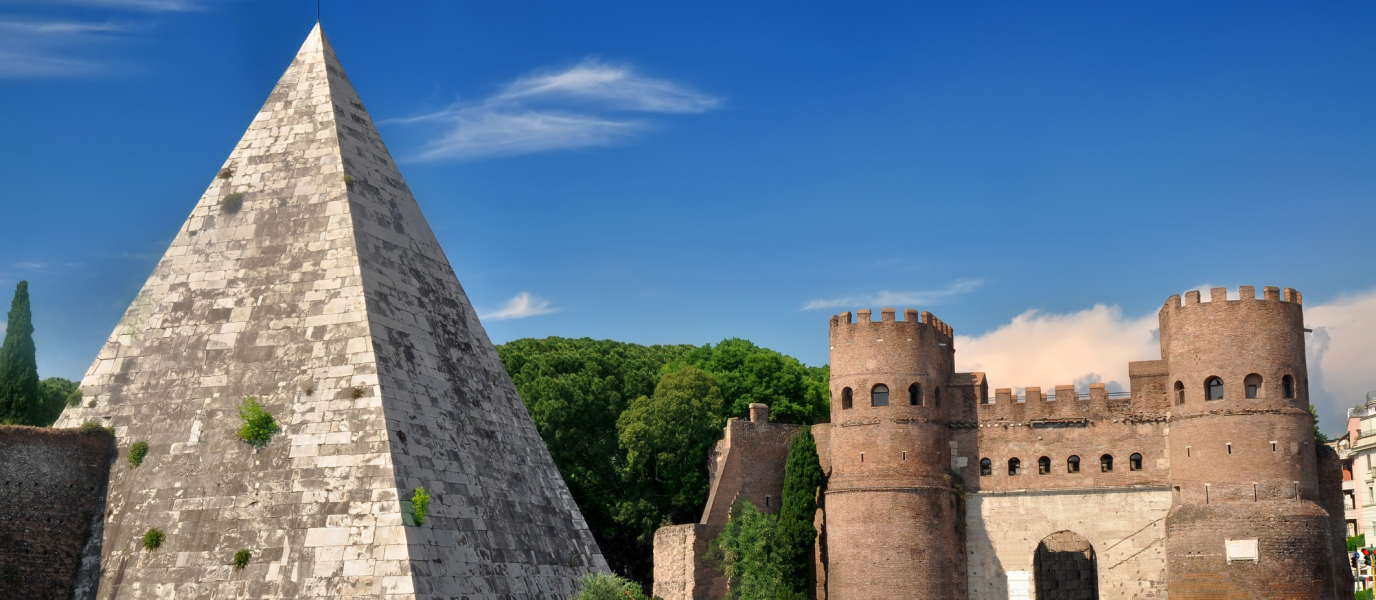Palatine Hill is the most central of the seven hills which together form the heart of Rome. In Roman mythology, this is place where Romulus founded the city of Rome. It’s also where the Roman emperors lived until the fall of the empire. This is one of the oldest areas of the Italian capital and therefore imbued with history.
Romulus and Remus
Legend tells that Ascanius, son of the Trojan hero Aeneas, founded the city of Alba Longa on the right bank of the Tiber. The throne was passed to Numitor but he was overthrown by his brother, Amulius, who did away with all of the former king’s male heirs. Amulius condemned Numitor’s only daughter, Rhea Silvia, to be a priestess of the goddess Vesta, thus ensuring she remained a virgin and hence protecting his throne. Unfortunately for Amulius, Rhea Silvia attracted the attentions of Mars, the god of war. Twin boys were conceived: Romulus and Remus. The babies were sent up the Tiber in a basket to protect them from certain death, and their little vessel ran aground somewhere between the seven hills.
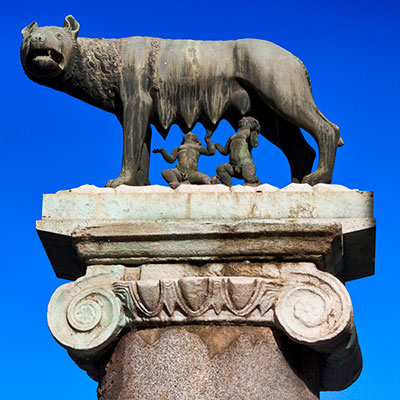
According to Roman mythology, the Capitoline Wolf suckled the twins until a shepherd found and raised them. Another version of the tale maintains that the Latin term lupa (she-wolf) was used pejoratively to refer to prostitutes, hence the twins may have been breastfed by a woman after all.
The twins grew up, killed Amulius and returned the throne to their grandfather before heading back to Palatine Hill. It was here, in the land of the Capitoline Wolf and the place where they had been raised, where they decided to establish their own city. They resolved their argument over the exact location of the new settlement in true Etruscan style, by counting the number of birds over their chosen hills. Romulus counted 12 vultures over Palatine Hill while Remus only clocked 6 over Aventine Hill. Romulus ordered that no one breach the limits of the new city, but Remus was so bitter after his defeat that he defied his brother and crossed the border. Romulus stayed true to his word and killed his brother, becoming the first king of Rome.
A home fit for an emperor
Romulus purportedly established his residence on Palatine Hill and archaeological evidence would suggest that the site has been inhabited since the year 800 BC. This makes it the most ancient part of the city of Rome. All levels of society lived on the hillside during the Roman Republic. Palatine Hill was cordoned off by a wall and several temples were raised around Romulus’ residence. Over time, the hill was taken over by the palaces and villas of the upper classes. Famous historical figures including Mark Antony, Nero and Cicero had homes there, and the first Roman emperor, Augustus, was born there.
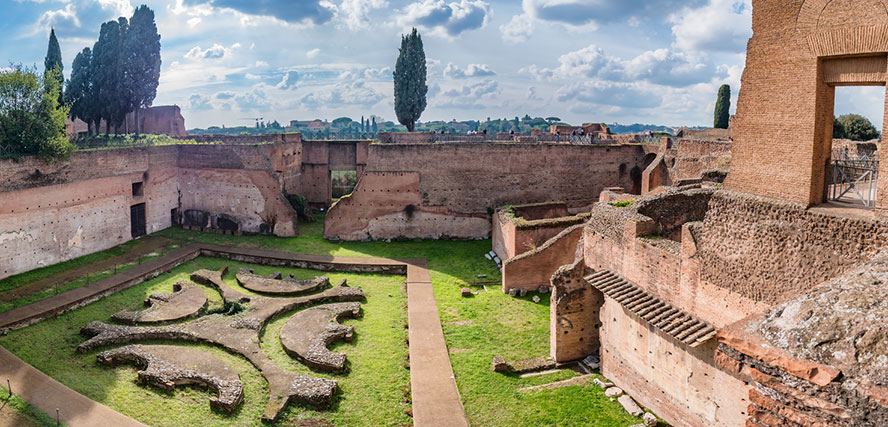
It was Augustus who first started to transform Palatine Hill into an exclusive residence for the emperors of Rome. Augustus wanted his people to see him as a citizen like any other, and the Domus Augusti was initially modest compared with the sumptuous luxury of the other homes in the area. However, by the early 1st century AD he had acquired all the villas on the hill and turned it into the seat of the imperial family. His successor, Tiberius, ordered that a new palace be built near Cicero’s home in the north-western part of the hill. Nero subsequently reformed the eastern side and built the Domus Transitoria, a luxury palace that had to be rebuilt following a fire. Emperor Vespasian eventually ordered that it be destroyed to allow for expansion of the Domus Augustana. The result was the Domus Flavia or Palace of Domitian, named after the last emperor in the Flavian dynasty. Emperor Septimius Severus later raised the Domus Severiana to the south east. All of these imperial palaces faced the Circus Maximus (link: Circus Maximus), and all of Rome’s citizens could appreciate their splendour from afar.
Palatine Hill was abandoned after the fall of the Roman Empire. By the 11th century it was almost a pile of ruins and the noble families of the time fought over control of the hill. Graves were dug up and replaced with pretty gardens. Archaeological excavations didn’t get under way until the 18th century.
Visiting Palatine Hill
Today, Palatine Hill is a huge outdoor museum filled with the impressive remains of the oldest period in Rome. You can access the hill either from the Roman Forum, near the Arch of Titus, or behind the Arch of Constantine, very close to the Colosseum. Here’s our pick of the top places to see on Palatine Hill:
- Domus Flavia: This palace was built in 81 BC by Emperor Domitian. It was a private residence with a public reception area, and some rooms adjoined the Domus Augustana and the Circus Maximus.
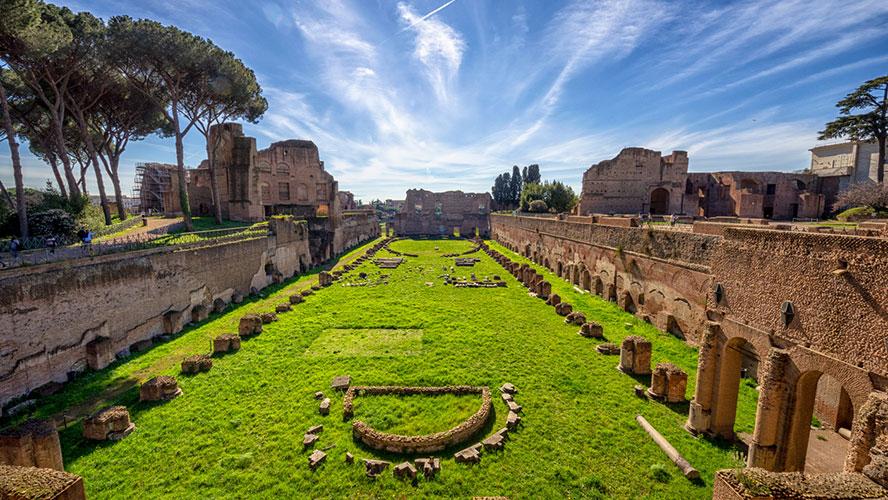
- Villa di Livia: This home from the 1st century BC is one of the best-preserved buildings on the entire hill (keep your eyes peeled for the remains of mosaics and frescoes on the walls). The Villa of Livia is actually an extension of the Domus Augusti. Emperor Augustus lived in the latter for 40 years and his widow subsequently took up residence.
- Farnese Gardens: In 1550, the aristocratic Farnese family built a beautiful garden on the ruins of Tiberius’ palace. It was one of the first botanical gardens in Europe.
- Stadium of Domitian: A small Roman circus used as a garden. Many of the sculptures recovered during excavation works were found here. The size of the stadium would suggest that it was used for competitions on foot rather than in chariots.
- Palatine Museum: This small exhibition space houses all manner of archaeological artefacts from Palatine Hill, ranging from frescoes and magnificent statues to the first mosaics and columns in the city.
























































